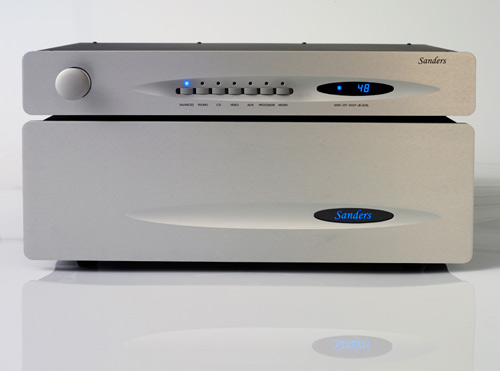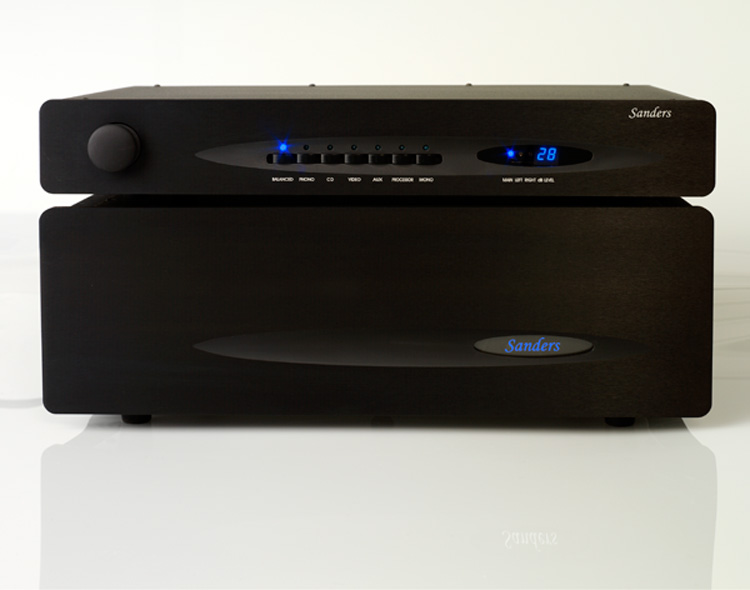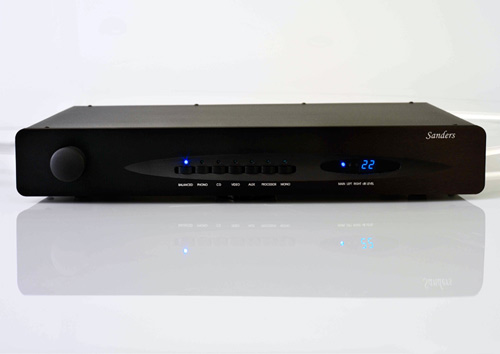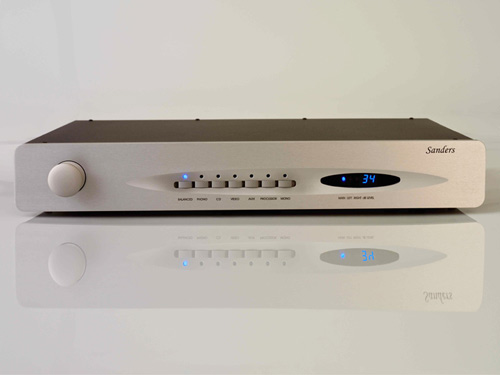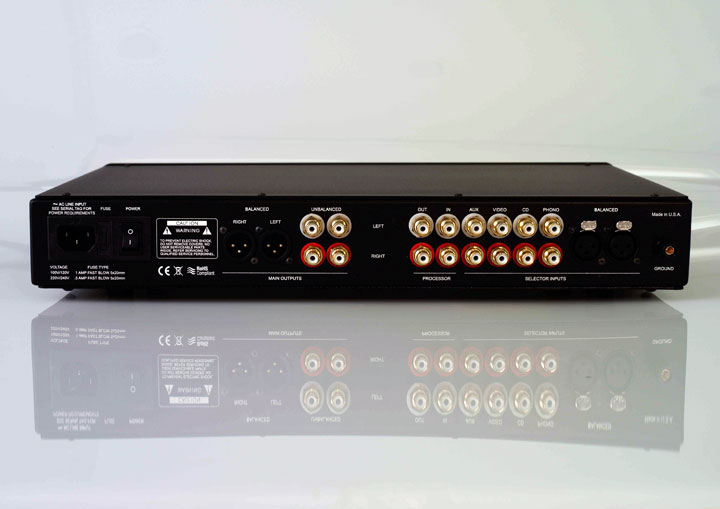Products Main Page
30 Day In-Home Trial
Our 30-day, in-home, risk-free trial works very simply and easily. We will ship you any equipment that you wish. You use it in your own home to listen to your familiar music, in your own listening room, with your own associated audio components for up to 30 days.
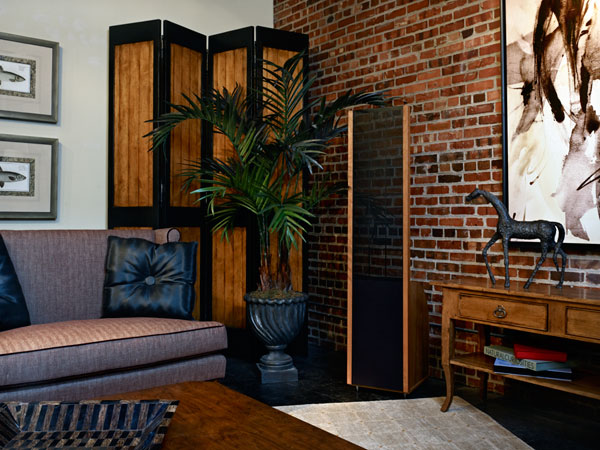 Sanders Sound Systems Model 10 Electrostatic Speakers in cherry
Sanders Sound Systems Model 10 Electrostatic Speakers in cherry
This is a much better way to audition equipment than going to a dealer's showroom where you listen in a strange environment for only a few minutes. You can only really get to know audio equipment by living with it for at least several days in your own home where you can use your own familiar equipment and listening room and have plenty of time to listen to much of your music collection.
Our equipment is modular so it can be handled by one person and shipped by UPS directly to your door. No trucking firms, palletized shipments, lift gates, or truck docks are involved and you need not be home to accept delivery.
Shipping time is about one week to most anywhere in the world. Tracking is available so you can follow your shipment and will know exactly when it will arrive.
Amplifiers
|
DESIGN PHILOSOPHY
Conventional amplifiers have serious problems when forced to drive electrostatic loudspeakers. Roger Sanders has developed the first amplifier specifically designed to drive these unusual speakers.
• .
Conventional amplifiers have serious problems when forced to drive electrostatic loudspeakers. Roger Sanders has developed the first amplifier specifically designed to drive these unusual speakers.
Electrostatic loudspeakers (ESLs) are very different from conventional magnetic speakers and place unusual and difficult demands on the way amplifiers deliver power to them.
A magnetic speaker presents a resistive/inductive load to an amplifier, while an ESL appears mostly as a capacitor.
|
WHAT IS THE DIFFERENCE BETWEEN THE ESL AMPLIFIER AND THE MAGTECH AMPLIFIER?
Both the ESL and Magtech amps use the same special amplifier modules that Roger designed to drive electrostatic speakers. The difference between the two is that ESL amps use a conventional, free-floating, unregulated power supply while Magtech amps use Roger's unique, 100% efficient, linear, regulated power supply.
Magnetic speakers draw tremendous current from an amplifier and that causes the internal power supply voltages to fluctuate dramatically in response to the music (typically by about 30%). This reduces the power from the amp and causes the distortion and bias to be modulated by the music.
A regulated power supply maintains stable internal voltages at all times. This is a tremendous improvement over a free-floating power supply. All amplifiers should use regulators, but virtually none do because their designers have not figured out how to make a powerful regulator that doesn't waste vast amounts of heat. Our regulator is unique in that it runs cold and wastes no heat. So we offer virtually the only regulated power supply amplifier on today's market.
Electrostatic speakers operate on voltage, not current. So they don't cause major fluctuations in the internal voltages like magnetic speakers do. But they will still cause some voltage modulation and mains voltage is not stable either. So even electrostatic speakers will benefit from an amplifier with a regulated power supply.
A regulated power supply will provide the best performance, so most of our customers (even our electrostatic speaker customers) opt for the Magtech. We keep the ESL amp in our line-up because it costs less than a Magtech and so represents a tremendous value. So those customers for whom money is a major concern, use the ESL amp instead of the Magtech.
In summary, the Magtech amp is the best for all speakers because it not only has the electrostatic amplifier modules, but it also includes a regulated power supply. So unless money is a major concern where the value of the ESL amp is essential, Roger recommends the Magtech.
Contact Us
CONTACT US

Sanders Sound Systems
12054 Deer Trail Road
Conifer, CO 80433
303-838-8130
This email address is being protected from spambots. You need JavaScript enabled to view it.
We ALWAYS answer our emails promptly. If you have a spam filter, please add sanderssoundsystems.com and sanderssound.com to your email white list. If you don't receive a reply, check your spam filter and of course, you can call us anytime.
Analog Preamplifier
Price: $5,000
The preamplifier is the control center of your system. This preamplifier is designed to provide the finest and most transparent acoustic performance available while increasing the value to our customers. Specifically, the new Sanders Preamplifier combines the performance and features of our previous Line Stage and Phono preamps into one.
|
Click to enlarge Our previous preamps (line stage and phono) were $4,000 each, for a total cost of $8,000 for our customers who needed a phono preamp. Since both preamps are now combined, customers who need a full-function preamp can now save several thousand dollars as the new preamp sells for half the price of the previous two. Additionally, more modern circuit design technology has reduced distortion and noise figures from those in the earlier preamps. The styling has been redesigned to better match our amplifiers. A video processor pass through also is included in the new preamp. All the previous ergonomic and performance features of the earlier preamps have been retained. |
The goal of a true audiophile grade preamplifier is to offer gain, switching, and other conveniences, while at the same time passing the original signal downstream without adding distortion, noise, or a sonic signature of its own. The Sanders Preamp does exactly that but includes many ergonomic features for convenience and ease of use that are not available on even far more expensive preamps. The levels of each individual input can be adjusted to get them all matched so that you don't get "blasted" or have to turn up the main level each time you switch sources. A stereo/mono switch remains standard equipment. The overall gain, individual gain between devices, and channel balance can be adjusted in precise, 1 dB increments. Muting by remote control is standard. A video readout makes it easy to monitor the levels. Controls are available both by remote control and on the front panel. Front panel controls are done through micro-touch electronic switches. Internal switching is done by miniature, sealed, gold relays. Conventional rotary volume controls have channel matching error of around 20%, which causes the left/right balance to shift as you change the level. To solve this problem, some preamp manufacturers use discrete, precision resistors on a multi-step switch. |
bla..bla.......................
|
While this solves the channel tracking problem, they introduce new ones. Specifically, they have very limited resolution due to too few steps (typically 31 steps of 2 dB each). These "stepped attenuators" produce very annoying switching transients at each step. The Sanders Preamp solves these problems by using the "volume control" knob to drive an optical comparitor circuit. The optical circuit operates a microprocessor that controls an electronic gain system. This controls the level using one hundred, one dB steps, with precision of greater than 0.1% between channels. The microprocessor monitors the signal voltage and waits for it to cross the zero voltage point between waves before switching to the next level. This prevents any switching transients. There is a digital display with beautiful, blue, light emitting diodes (LEDs). The display continually shows the output level of the unit and switches automatically to show level differences between channels, when you adjust the balance, or when you adjust the input levels. You no longer have to guess at the levels or try to see fine gradations on a knob to know the levels, since you can see them from several feet away. |
Most components come with a remote control transmitter that only controls that particular component. Therefore you end up adding that remote transmitter to the pile of remotes you have for all your other electronics. Rather than contribute to "remote clutter", the Sanders Preamp comes with a programmable remote that can be used to operate all your components. You will then no longer have to dig through a pile of remotes every time you want to adjust something in your audio/video system. The phono preamp offers exceptional flexibility and features, including virtually all the features of the most expensive, dedicated phono preamps. These include switchable gain for both moving magnet and moving coil cartridges, and user-adjustable cartridge loading for both resistance and capacitance so that users can match their cartridge manufacturer's specifications for optimum performance. The phono circuit has the benefit of extremely low distortion and an ultra-quiet noise floor. Click to enlarge
|
bla
SPECIFICATIONS OF PREAMPLIFIER
Electrical Specifications
|
INPUTS
|
OUTPUT
|
|
Frequency Response -3 dB at 5 Hz and 200 kHz |
Noise Greater than 100 dB below 1 volt reference |
|
Distortion Less than 0.002% from 10 Hz to 40 KHz @ 5 volts peak into 600 ohms or higher, shunted by 1,000 pF or less |
Output Impedance 50 ohms, non-reactive, balanced or single-ended |
|
Phono Input Impedance User adjustable between 47,000 and 100 ohms. Default setting is 47,000 ohms |
Phono Input Capacitance User adjustable between 50 pf and 1,200 pF. Default setting is 50 pF. |
|
Input Impedance 47 kohms, balanced or single-ended |
Gain User adjustable up to 18 dB. Default setting is +8 dB |
|
Maximum Output 10 volts peak |
Crosstalk Greater than 70 dB from 20 Hz to 20 KHz |
|
Power Supply Independently regulated with shielded toroidal transformer and 20,000 uF of capacitance |
Power Consumption 10 watts |
|
Voltage Voltage is user selectable for use world-wide |
Weight and Dimensions
|
Weight Net Weight: 8 pounds (3.6 KG) |
Dimensions 17" wide x 2.5" tall x 10.5" deep (43cm x 6.35cm x 27cm) |
Digital Preamplifier
$6,000
Light Harmonic DACs are extremely expensive, but you can obtain the same performance in our Digital Preamp for a fraction of the cost -- and get a full-featured preamp as well! Sanders believes in giving great value for the money, and this is a perfect example of this philosophy.


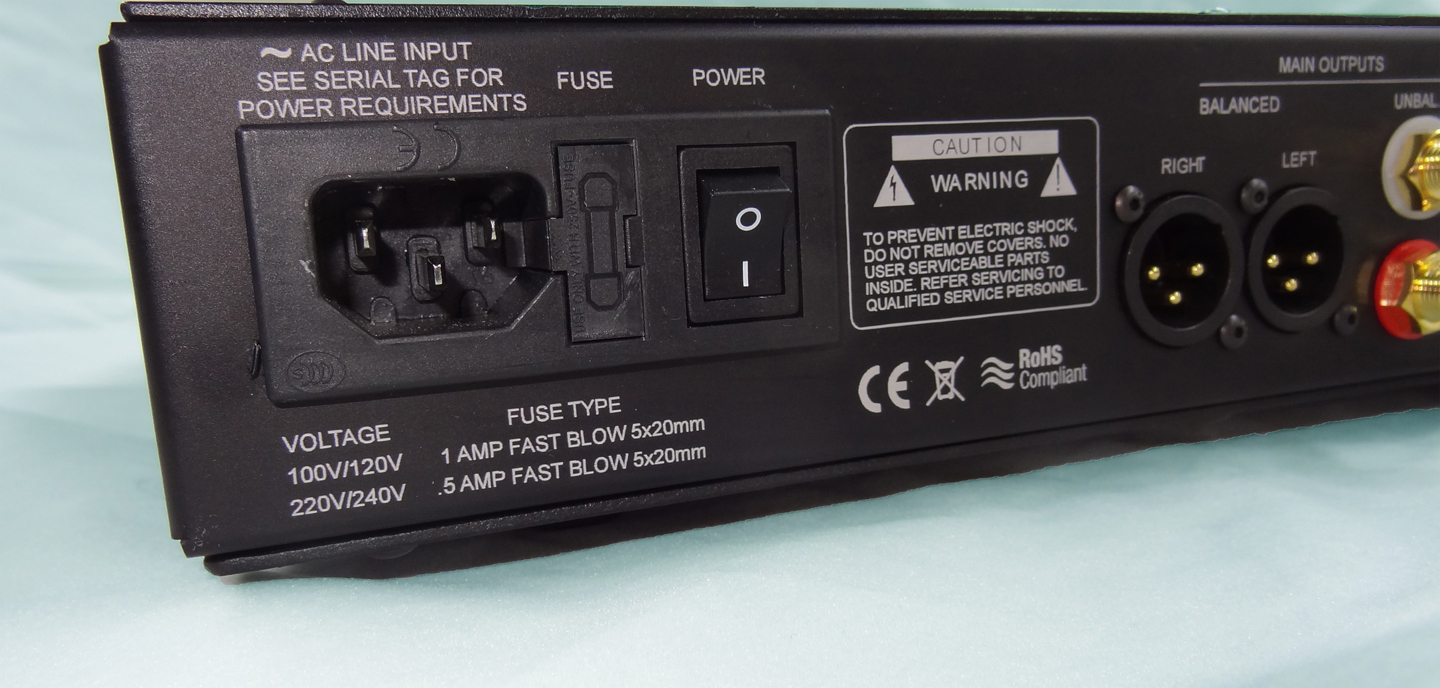
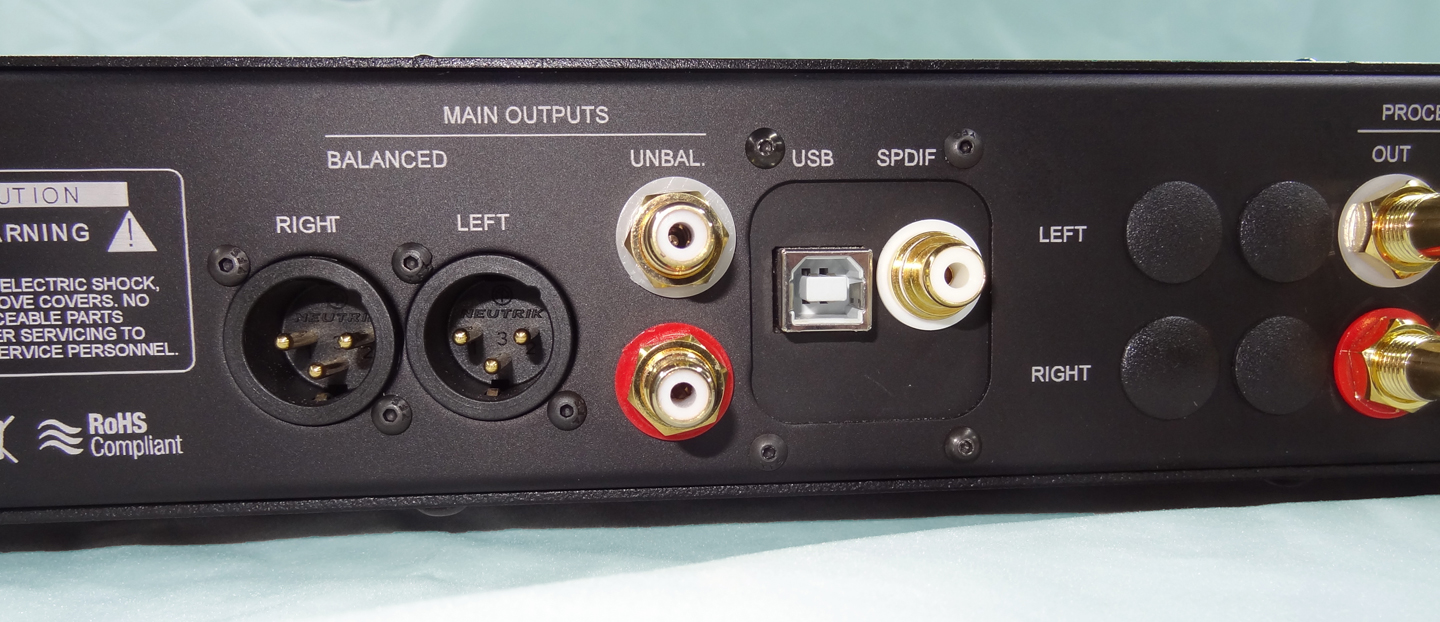
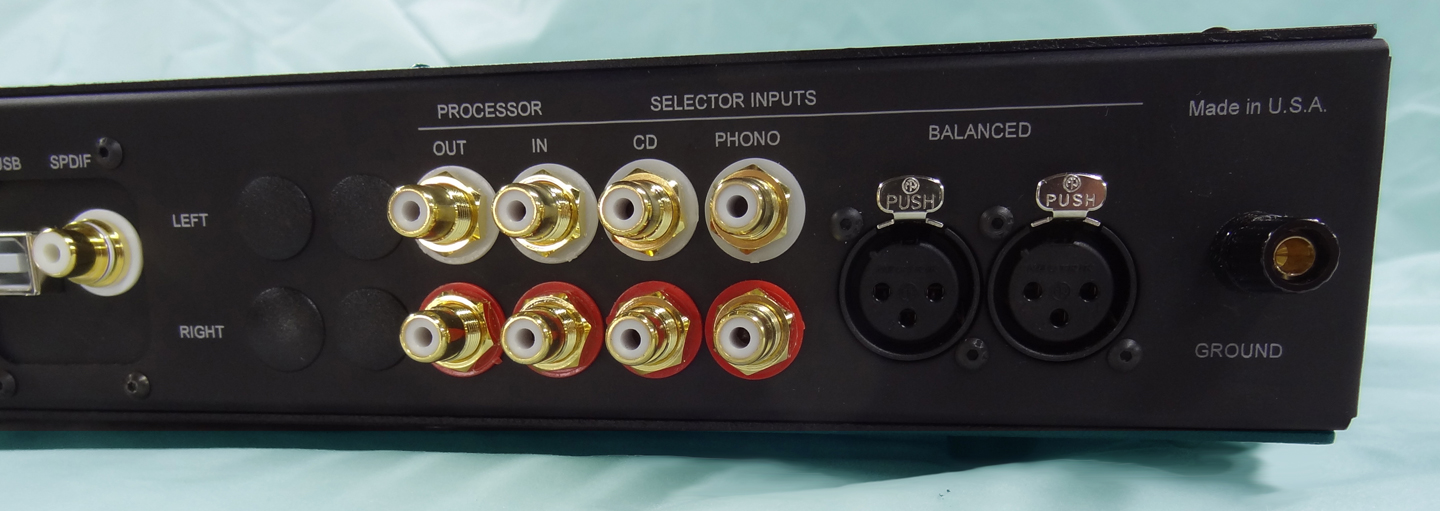
CIRCUIT SPECIFICATIONS
Electrical Specifications
|
INPUTS
|
OUTPUT
All outputs may be used simultaneously. |
|
FREQUENCY RESPONSE: -3 dB at 5 Hz and 200 kHz |
NOISE: Greater than 90 dB below 1 volt reference |
|
DISTORTION: Less than 0.002% from 10 Hz to 40 KHz @ 5 volts peak into |
OUTPUT IMPEDANCE: 50ê, non-reactive, balanced or single-ended |
|
INPUT IMPEDANCE: 47kê balanced or single-ended |
GAIN: 8 dB (user adjustable) |
|
MAXIMUM OUTPUT: 10 volts peak |
CROSSTALK: Greater than 70 dB from 20 Hz to 20 KHz |
|
POWER SUPPLY Independently regulated with shielded toroidal transformer and 20,000 þF of capacitance |
POWER CONSUMPTION: 10 watts |
Digital Specifications
| DAC Chip: ES9018 | Native PCM Format Decode: 16/44.1KHz to 32bit 384KHz |
| IOS support: Enabled through CCK | Native DSD Format Decode: DSD64, DSD128, DSD256 |
| Windows OS support: Enabled through LH Windows Driver | MacOS Support: Plug and play |
| S/PDIF Input: 44.1K to 216K linear PCM | Digital Filter: LIght Harmonic TCM (Time Coherence Mode) |
| Audio Master Clock: TCXO Customized DUAL | S/N ratio: 102 dB |
Weight and Dimensions
|
WEIGHT: 8 pounds (3.6 KG) Shipping Weight: 13 pounds (5.9 KG) |
DIMENSIONS HEIGHT: 21/2" (6.35 cm) |

